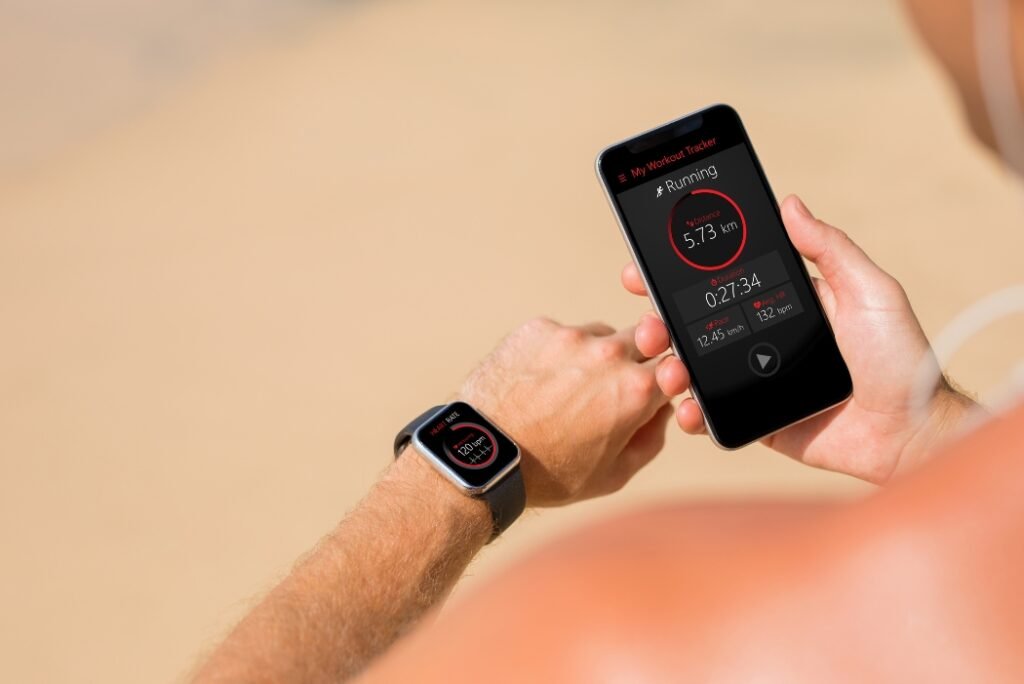New Year Workout Plan Guide: From Setting Goals to Staying Consistent in 2025

The dawn of a new year brings a surge of motivation. It’s a time for fresh starts and a chance to prioritize health and well-being.
For many, this means crafting a New Year workout plan to finally achieve those fitness goals. However, the excitement often fades as the year progresses, and many plans fall by the wayside.
This comprehensive guide provides a step-by-step approach to help you create a New Year workout plan for 2025 that’s both effective and sustainable.
Contents
Understanding the Fundamentals: Why a Workout Plan Matters

A well-structured New Year workout plan is your roadmap to success. It provides direction, increases motivation, and helps you stay consistent, even when motivation wanes.
Whether your goal is weight management, increased strength, improved endurance, or simply feeling more energized, a plan helps you track progress and celebrate milestones.
This leads to a sense of accomplishment and fuels continued commitment to your fitness journey.
Crafting Your 2025 Workout Plan: Step-by-Step Guide
Step 1: Define Your Goals

The first step in creating an effective New Year workout plan is to set clear and achievable goals. SMART goals are specific, measurable, achievable, relevant, and time-bound.
For example, instead of a vague goal like “get in shape,” a SMART goal might be “lose 10 pounds of body fat in four months” or “run a 5K in under 30 minutes by June.” Well-defined goals provide a clear target and help you stay focused.
Step 2: Assess Your Fitness Level

Before diving into a New Year workout plan, it’s crucial to assess your current fitness level. This helps you select appropriate exercises and start at a manageable intensity, reducing the risk of injury and discouragement.
A simple self-assessment can include trying a few basic exercises, such as push-ups, squats, or jogging. Notice how many repetitions you can do comfortably or how long you can sustain an activity.
Step 3: Choose Activities You Enjoy

The key to long-term success with any New Year workout plan is enjoyment. If you dread your workouts, you’re unlikely to stick with them.
Explore a wide range of fitness options to discover activities that genuinely appeal to you. Gym workouts offer access to various strength training equipment and cardio machines.
Group fitness classes provide a social and motivating atmosphere. Barre, CrossFit, yoga, and Zumba are just a few examples. Home workouts using bodyweight exercises or online fitness programs can be convenient and effective.
Outdoor activities like running, swimming, hiking, and biking provide a refreshing change of scenery. If you prefer a competitive element, consider joining a local sports league or recreational club.
The goal is to find activities that match your personality, preferences, and schedule, making it more likely you’ll look forward to each workout.
Step 4: Create a Balanced Routine

A comprehensive New Year workout plan should incorporate the five key components of fitness: aerobic exercise, strength training, mobility, and rest and recovery.
Aerobic exercise, such as running, swimming, or cycling, elevates your heart rate, strengthens your cardiovascular system, and aids in weight management. Strength training using weights, resistance bands, or bodyweight exercises builds muscle mass, increases metabolism, and improves bone density.
Mobility work, like stretching or yoga, enhances flexibility, range of motion, and helps prevent injuries. Adequate rest and recovery are essential for allowing your muscles to repair and rebuild after workouts.
It’s important to include rest days in your New Year workout plan to prevent burnout and reduce the risk of injury. When designing your weekly routine, aim to include at least 150 minutes of moderate-intensity aerobic activity or 75 minutes of vigorous-intensity aerobic activity.
Additionally, include two days of muscle-strengthening exercises that work all major muscle groups. To ensure balanced development, focus on incorporating different movement patterns: pushing, pulling, hinging, squatting, and carrying.
Pushing exercises, such as push-ups or bench presses, work your chest, shoulders, and triceps. Pulling exercises, like pull-ups or rows, target your back, biceps, and forearms. Hinging movements, including deadlifts or kettlebell swings, engage your posterior chain, including your hamstrings, glutes, and back.
Squatting exercises, such as squats or lunges, work your quads, hamstrings, and glutes. Carrying exercises, like farmer’s walks or suitcase carries, build grip strength and core stability.
Sample weekly schedules for three-day and four-day splits can provide a starting point for incorporating these components. A three-day split might include strength training on Monday, aerobic focus on Wednesday, and mobility work on Friday, with the weekend reserved for rest and recovery.
A four-day split could involve strength training on two consecutive days, followed by a rest day and then aerobic focus, repeating the cycle for the remainder of the week. Remember that these are examples, and you can customize your plan based on your preferences and goals.
Step 5: Set Realistic Expectations and Gradual Progression

The allure of a “New Year, New Me” transformation can lead to setting unrealistic goals, pushing too hard, and ultimately burning out. Remember that lasting change takes time and consistency.
Start slow and gradually increase the intensity and duration of your workouts. Focus on building a sustainable routine that you can maintain throughout the year, rather than aiming for drastic changes overnight.
If you’re new to exercise, starting with just 30 minutes a few times a week is a great starting point. You can gradually increase the duration or frequency as you gain fitness and confidence.
Step 6: Stay Consistent and Track Progress

Consistency is crucial for achieving your fitness goals with your New Year workout plan. Find strategies that help you stay motivated and accountable.
Working out with a friend or joining a group fitness class can provide social support and encouragement. Rewarding yourself for reaching milestones can reinforce positive behavior.
Tracking your progress using a workout log or fitness app helps you visualize your achievements and identify areas for improvement.
Step 7: Consider Seeking Professional Guidance

Especially if you’re new to exercise or have any underlying health conditions, consulting with a qualified healthcare professional, such as your primary care doctor or a certified personal trainer, can be invaluable.
Additionally, to maximize your results, consider exploring Anita Herbert’s programs. As a fitness coach and transformation specialist, Anita offers the FitQueen Method, which provides a personalized approach, comprehensive training plans, and community support.

Her expert guidance as an IFBB Pro Bikini Athlete and the success of over 76,000 women make her programs a valuable resource for your New Year workout plan. Visit Anita Herbert’s website and take advantage of these exclusive Anita Herbert coupons for the best prices.
These programs can help you create a safe and effective New Year workout plan tailored to your individual needs and goals. A professional can also provide guidance on proper exercise technique, nutrition, and injury prevention.
Step 8: Make it Fun!

Working out shouldn’t feel like a chore. Find ways to inject enjoyment into your New Year workout plan.
Listen to upbeat music or engaging podcasts while you exercise. Vary your routines to keep things interesting. Incorporate activities you genuinely enjoy, whether it’s dancing, hiking, swimming, or playing a sport.
Remember that exercise has numerous mental and emotional benefits as well. It releases endorphins, which have mood-boosting effects, and can help reduce stress, anxiety, and depression.
Nutrition for Your New Year Workout Plan

A well-rounded New Year workout plan includes not only exercise but also proper nutrition. Food fuels your workouts and helps your body recover and adapt.
Focus on consuming whole, unprocessed foods, including plenty of lean protein, healthy fats, and complex carbohydrates. Protein is essential for building and repairing muscle tissue. Good sources include lean meats, poultry, fish, eggs, beans, and lentils.
Healthy fats support hormone production and provide sustained energy. Include avocados, nuts, seeds, and olive oil in your diet. Complex carbohydrates provide the energy you need for your workouts.
Opt for whole grains, fruits, vegetables, and legumes. It can be helpful to plan your meals and snacks in advance, especially on training days, to ensure you’re adequately fueling your body before and after workouts.
A pre-workout snack could include a piece of fruit and a scoop of whey protein powder. A post-workout meal might consist of grilled chicken breast, a serving of brown rice, and a side of steamed vegetables.
On rest days, adjust your calorie intake slightly downward while maintaining a balanced macronutrient distribution.
Conclusion
As you embark on your 2025 fitness journey, remember that creating a sustainable New Year workout plan is about making gradual, long-term lifestyle changes.
Define clear goals, choose activities you enjoy, establish a balanced routine, prioritize consistency, track your progress, and make it fun. By following these steps, you’ll set yourself up for success and make 2025 your healthiest and fittest year yet.





